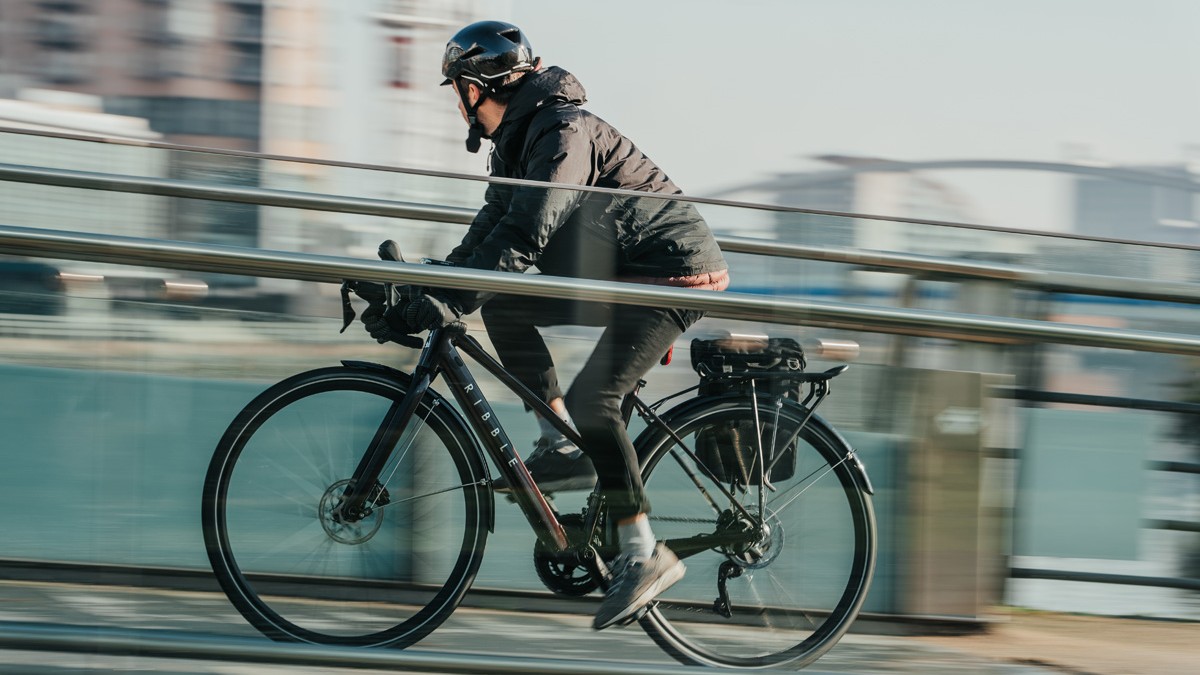Are soaring fuel prices extending the e-bike boom?
High fuel prices certainly aren’t hurting e-bike sales


Motorists across Europe and North America are feeling some serious pain at the pump as gasoline prices soar while geopolitical tensions remain.
In the UK, the Department for Business, Energy & Industrial Strategy reported that motorists saw the steepest weekly increase in fuel prices in more than 18 years after Russia invaded Ukraine. Prices could go up to as high as £2.50 a litre for petrol, and £3 for diesel.
Likewise, in the U.S., AAA reports that the average national price for a gallon of regular gasoline hit $4.17 earlier this month, which is the highest national average ever, not accounting for inflation.
Fuel prices are not likely to come down anytime soon as both, the US and the UK, have been importing a significant portion of their gas and oil from Russia. US President Joe Biden recently banned all Russian oil and gas imports, and the UK is said to phase out its gas and oil imports by the end of 2022 as well.
This means that people are increasingly looking at more wallet-friendly ways to get around town, be it through carpooling, public transportation, electric vehicles or, you guessed it, (e)bikes.
The pandemic bike boom boosted e-bike sales all over the world, and fuel prices will only keep the boom going.
While the US had been slow to adopt e-bikes and lagged behind the European and Asian markets, we saw a turn in 2020. E-bikes were reportedly outselling fully electric vehicles two to one, as over half a million new e-bikes made their way onto US streets.
The latest race content, interviews, features, reviews and expert buying guides, direct to your inbox!
What's more. Deloitte projects that between 2020 and 2023, 130 million e-bikes will be sold worldwide, which means that e-bikes are slated to be the world’s best-selling electric vehicle.
While sales booms are often fleeting, lasting mere months or a few years at best, the current fuel prices could very well be extending the e-bike boom.
“Our retail teams estimate that about 30% of new customers coming in note the rising gas prices as a factor in their decision to purchase an e-bike,” a Rad Power Bikes spokesperson told Cycling Weekly.
“The current situation has highlighted how much we all have to gain from the transition to more efficient, affordable methods of transportation.”
And with approximately 1,600 MPGe (miles per gallon equivalent), Rad Power Bikes claims that e-bikes are quite simply the most efficient and wallet-friendly form of transportation.
“We have always considered our e-bikes as a way to swap car miles and save money on gas…Our utility and cargo bikes like the RadRunner and RadWagon have surged in popularity because they make cargo-carrying (whether made of stuff or people) a breeze, truly replacing car miles,” said the spokesperson.
The Rad Power Bikes community is already 400,000 riders large and growing. They collectively log some 150 million miles per year, which would have cost a plain fortune in fuel, and offsets more than 100 million pounds of CO2.
Arleigh Greenwald from Tern said it’s been harder to gauge whether the spike in sales and website traffic is due to the rising fuel prices or new launches —like the Quick Haul— or, of course, the emerging spring weather in the Northern Hemisphere.
“It’s hard to say. Tern has seen growth year over year due to new key models being released, and here in North America - more people realizing they can replace car trips with bike trips. But I can say we are receiving a lot more non-endemic media inquiries about getting into bike commuting,” Greenwald said.
Likewise, Wakefield Gregg, owner of The eBike Store, Inc, couldn’t definitively say whether high fuel prices are benefitting his business. But they’re not hurting him either.
“Website traffic is double that of this time last year, but the industry is so new and volatile so it’s hard to tell,” said Gregg.
The demand and supply issue still remains as well, his colleague Andrew Schnell added.
“Interest in e-bikes has been consistently high ever since the pandemic started. Two years in, people are still buying bikes and we can’t get them in fast enough,” he said.
The Portland, Oregon-based business sells around half its bikes to bike commuters. A large portion are families who are switching to being a one-car household: one car, one e-bike.
“The cost of owning, driving and maintaining a car costs around $10,000 a year. An electric bike isn’t inexpensive and there’s quite an upfront cost, but the long-term maintenance cost is limited, the cost of electricity is negligible and so an e-bike can save a family a lot of money over the course of quite a few years,” Schnell said.
Schnell suggested the Gazelle Modeo for an economical e-bike that’s a good entry point for single commuters. The more expensive Specialized Vato SL and Specialized Turbo Creo SL were, however, by far their best-sellers. For cargo options, best-sellers include the Tern GSD.
“It will fit two kids, and you can easily adjust the fit to suit two different adults,” Schnell said.
Considering an e-bike yourself? Checkout our e-bike buying guide.

Cycling Weekly's North American Editor, Anne-Marije Rook is old school. She holds a degree in journalism and started out as a newspaper reporter — in print! She can even be seen bringing a pen and notepad to the press conference.
Originally from the Netherlands, she grew up a bike commuter and didn't find bike racing until her early twenties when living in Seattle, Washington. Strengthened by the many miles spent darting around Seattle's hilly streets on a steel single speed, Rook's progression in the sport was a quick one. As she competed at the elite level, her journalism career followed, and soon, she became a full-time cycling journalist. She's now been a journalist for two decades, including 12 years in cycling.